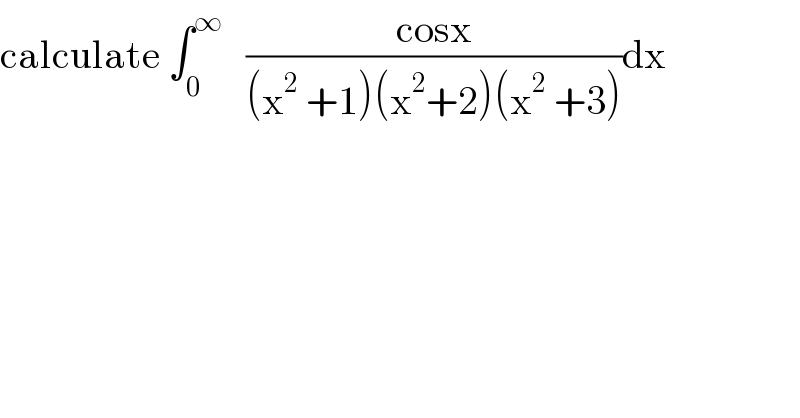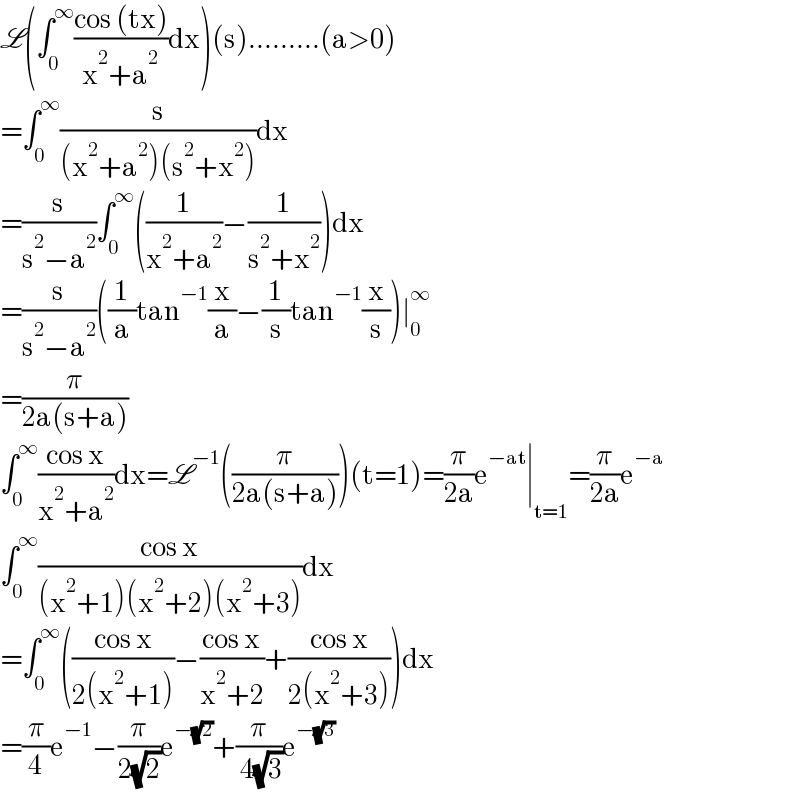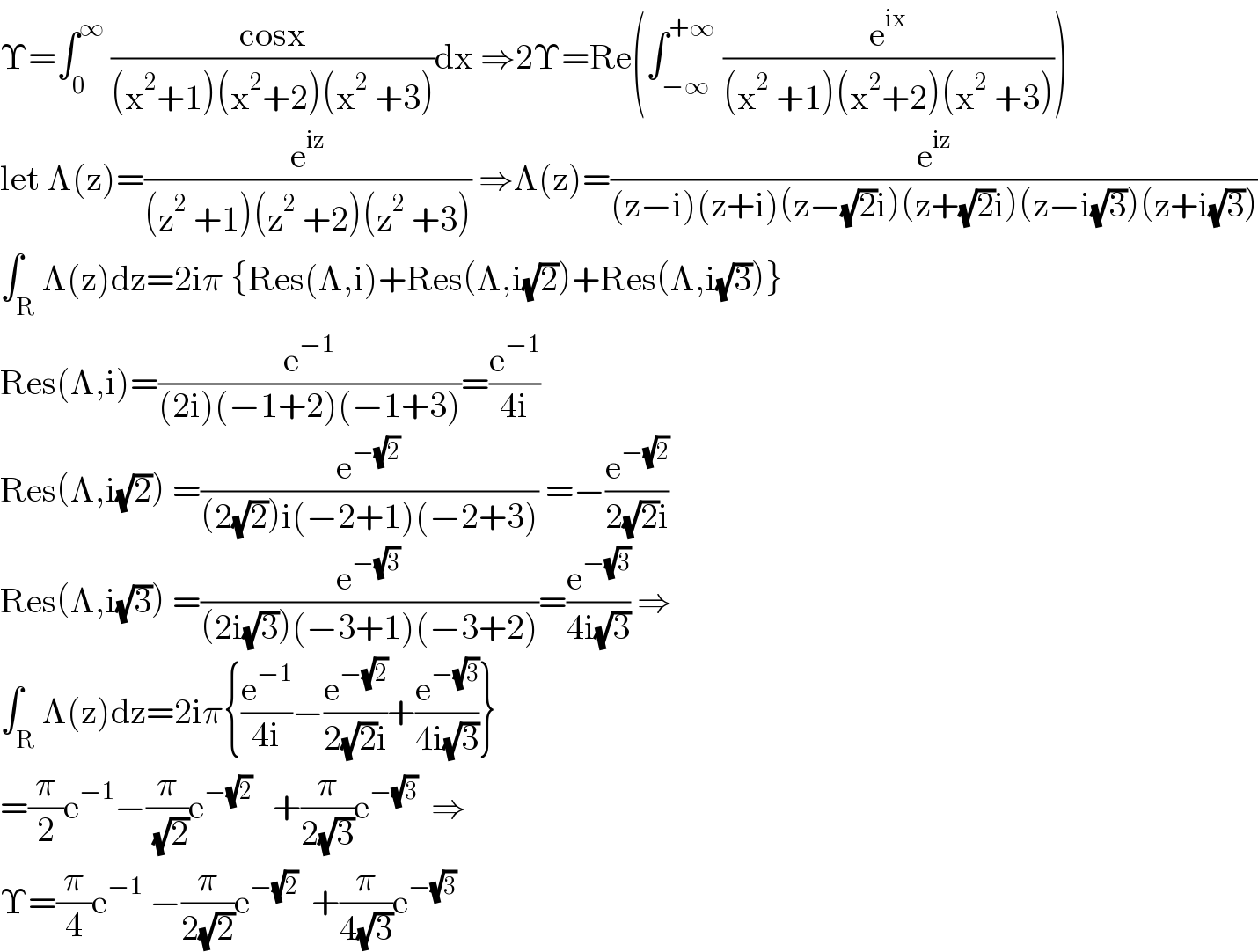
Question and Answers Forum
Previous in Relation and Functions Next in Relation and Functions
Question Number 146898 by mathmax by abdo last updated on 16/Jul/21

Answered by qaz last updated on 16/Jul/21

Commented by mathmax by abdo last updated on 16/Jul/21

Answered by mathmax by abdo last updated on 16/Jul/21

